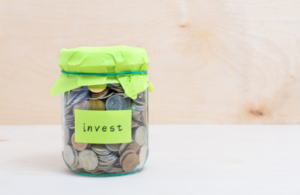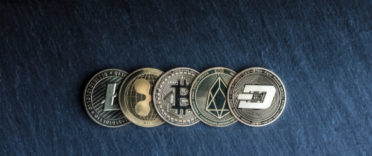 In this beginner's guide to investing, we explain how to get started with investing, breaking down the process into simple steps. The first step is to understand where your monthly income is presently being spent by creating a budget. If you read our article "Big picture budgeting" you will see how simple it is to create a budget and understand where you are spending your money. The great thing about creating your budget is that you will then have complete visibility over your spending habits and where you are wasting money on impulse buys or too many takeaways. If you can curb your spending in these areas then you will have some 'free' money to start investing. Once you have created a budget there are a number of excellent budgeting apps that will keep you on track, find out more by reading our article - "The best budgeting apps in the UK: How to budget without trying"
In this beginner's guide to investing, we explain how to get started with investing, breaking down the process into simple steps. The first step is to understand where your monthly income is presently being spent by creating a budget. If you read our article "Big picture budgeting" you will see how simple it is to create a budget and understand where you are spending your money. The great thing about creating your budget is that you will then have complete visibility over your spending habits and where you are wasting money on impulse buys or too many takeaways. If you can curb your spending in these areas then you will have some 'free' money to start investing. Once you have created a budget there are a number of excellent budgeting apps that will keep you on track, find out more by reading our article - "The best budgeting apps in the UK: How to budget without trying"
Once you have some 'free' money every month you should first focus your efforts on building an emergency fund. This emergency fund is to help cover any emergency expenses that always seem to scupper your plans to live within a budget. This emergency fund should ideally be between 3 to 6 months of net income. To find out some great tips on building up a cash buffer read our article - "Building an Emergency Fund - the what, why & how"
Now you have your finances in order you can start to build for your long term goals by learning about investing and how it can help you to reach these goals.
What is investing?
Investing is where you buy an asset or a range of assets in the hope that your chosen assets will grow in value and produce a return higher than you would get by placing your money in a savings account with a bank or building society.
History has shown that leaving your savings in cash for the long term means that the spending power is eroded over time by the impact of inflation. The interest you earn through a savings account will rarely beat inflation and so investing your money in assets that have the potential to beat inflation is a wise move.
One thing to point out before we go any further is that to get a greater return on your money, you will need to accept the higher risk that exists by investing in assets as opposed to leaving your money in the bank. Higher risk means that there is a higher risk that you could lose some or all of your money.
Where is the best place to put my investments?
When we talk about investing this typically means investing in one or more of the following assets.
- Shares
- Bonds & Gilts
- Property
- Commodities
If you are currently a member of a pension scheme or have a personal plan, such as a SIPP, then you will almost certainly already be investing in shares and bonds via something called a fund. Before we go any further let me explain a few of the terms.
Investing terms explained
What is a share?
A share is a small part of a company that is listed on the stock exchange, by buying a share you are effectively buying part of a limited company.
Companies place shares on the stock market to encourage investment and then use the cash generated to help develop and grow. The share price of a company is the current buying price for each share and will rise and fall over time depending on its financial performance and growth. Owning shares will also entitle you to any dividend declared by the relevant company. A dividend is a payment made, typically twice a year and the amounts paid depend primarily on the companies financial performance in the previous period. Dividends can be viewed as a reward for your continued support of the company by owning their shares.
What is a bond?
Bonds are issued by governments and corporations when they want to raise money. If you invest in bonds you are basically lending your money to the government or corporation with a specific date when the face value of your loan will be repaid. Bonds issued by a government are also referred to as Gilts as it is considered a gilt-edged investment i.e. more secure. A bond will also pay a fixed amount of interest, known as the 'coupon rate' over the period of the bond term.
The value of a bond will vary over time and can be bought and sold, similar to shares. The value of a bond will vary depending on how favourable the interest paid (coupon) is compared with the return available on other investments.
What is a fund?
Funds are an easy and convenient way to invest and are a popular investment vehicle for novice investors. A fund is simply a pool of money from a number of investors where the fund manager invests in various types of assets depending on the investment objectives of the fund. When you invest in a fund you buy units in that fund, the value of which can go up and down with the performance of the underlying assets. These assets could be shares, bonds or any other asset.
With a fund manager making the investment decisions, investing in funds takes away much of the pressure of choosing and managing your own investments and for this service, a management fee will be deducted from your investments.
There are a variety of funds available, investing in a broad range of asset types across many different geographical locations.
How much money can I make investing?
It is difficult to give an exact figure regarding the expected return on your investment as this will primarily depend on two factors
- the level of risk you are prepared to take with your investments
- the period of time your investments are left to grow
Having said that the Barclays Equity Gilt Study suggests that investing in shares has produced an average annual return of approximately 5% per annum above inflation. The equivalent rate for bonds/gilts was almost 2% while the return on cash was just 0.70% per annum above inflation.
Is investing right for me?
Although there is more risk involved with investing this should not put you off from making a start, as it is one way of protecting your money against the effects of inflation over the long term.
You can start your investment journey with just a small lump sum or a low regular monthly investment.
How do I start investing?
The best place to start investing for a beginner is to take advantage of the tax-free investments available such as a pension (SIPP) or an Individual Savings Account (ISA). Think of them as tax-advantageous boxes into which you place your investments.
1) Choose your investment wrapper
Most people choose to invest via a Stocks and Share ISA or pension (such as a SIPP). Below I give a brief description of how each one works.
What is an ISA?
An ISA is a personal saving plan that allows you to save a maximum amount of £20,000 in a tax year.
There is no Income Tax or Capital Gains Tax payable on the interest or returns on your ISA investment.
There are 4 main types of ISA available:
- Cash ISA - where the investment is held in cash
- Stocks & Shares ISA - where the investment is held in shares or funds
- Lifetime ISA - designed for saving to buy a home or towards an income in later life (separate rules apply, check out our article Lifetime ISAs explained)
- Innovative finance ISA - instead of cash or stocks and shares, an innovative finance ISA uses peer-to-peer lending to match investors who are willing to lend, with borrowers.
Once you have decided upon the product to invest via (pension or ISA) you then need to go about deciding which investments to put into it. For most people who are already contributing to their employer's pension scheme, perhaps via auto-enrolment, they would usually choose to invest via a Stock and Shares ISA.
What is a SIPP?
A SIPP is a personal pension plan where the investment choice is made by the plan owner. Investment can be made in a variety of assets but investing in funds is by far the most popular choice. A SIPP can be started and managed online and changes can be made anytime.
Benefits from a SIPP cannot be accessed until the owner reaches the age of 55.
Contributions into a SIPP attract tax relief at the plan owner's marginal rate of tax. All contributions will be increased by 20% basic tax relief however higher and additional rate taxpayers can claim the additional relief through their annual tax return.
You may already have a pension scheme available through your employer so make sure you have joined the scheme. If your employer is also paying into your scheme make sure are taking full advantage of this benefit. For more information read our article "The best & cheapest SIPPs"
2) Choose your investments
When choosing which Investments to place within your SIPP or Stocks and Shares ISA you have two options. Firstly you can choose to get someone else to do all the hard work for you and choose not only the asset mix but also the individual funds to invest in. Alternatively, you could choose to do it yourself (the so-called DIY option). You will notice that I mentioned investing in funds rather than investing directly into assets such as shares and bonds. That's because investing in assets via funds not only reduces the costs involved, as you benefit from economies of scale, but it also helps to reduce investment risk. Using funds you can still invest in almost any asset you want to including bonds and shares. Funds are usually run by a fund manager (known as active funds) but they can also be run by computer algorithms (known as passive funds), with the latter usually being cheaper to own.
Our investment portfolio calculator can give you an idea of the sort of portfolio you might build from different assets assuming that you have a medium risk profile. Of course, the ultimate portfolio you may choose depends on your attitude to investment risk, your investing timeframe, your age and your investment goals. If you are unsure or not confident about selecting your own investments then you should seek the help of a financial adviser or one of the growing number of online investment solutions. These include the likes of Wealthify* and Nutmeg that can recommend a portfolio with an ISA or pension and Wealthify* will even allow you to start investing with as little as £1. These services will then monitor, review and adjust your portfolio in accordance with its stated mandate and risk target over time. You do not have to do anything at all. We have created a best-buy table of these online investment propositions which includes our rating for each of them along with links to full reviews of each service.
If you would rather invest your own money yourself then you need to be comfortable with managing the investment risks involved. In order to start investing your money you will need to pick an investment platform, such as Hargreaves Lansdown* or Interactive Investor*, and open SIPP or Stocks and Shares ISA with them. You would then pick and choose the Investments (i.e. funds) you want to hold within the SIPP or ISA. Investment platforms such as Hargreaves Lansdown and Interactive Investor also provide a range of research and funds shortlists to help you. However, I suggest you also carry out your own research using services such as Morningstar or our own 80-20 Investor service. For more information read my article "How to get the best return on £50,000'".
If a link has an * beside it this means that it is an affiliated link. If you go via the link Money to the Masses may receive a small fee which helps keep Money to the Masses free to use. But as you can clearly see this has in no way influenced the above editorial. The following links can be used if you do not wish to help Money to the Masses or take advantage of the exclusive Money to the Masses offers - Wealthify, Hargreaves Lansdown and Interactive Investor.





